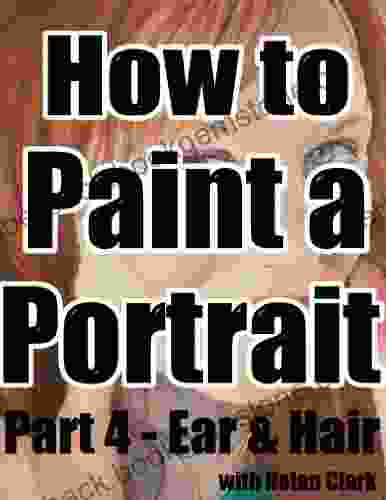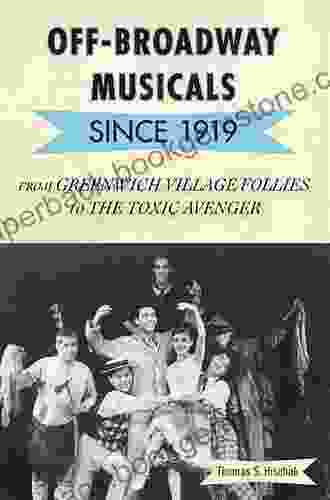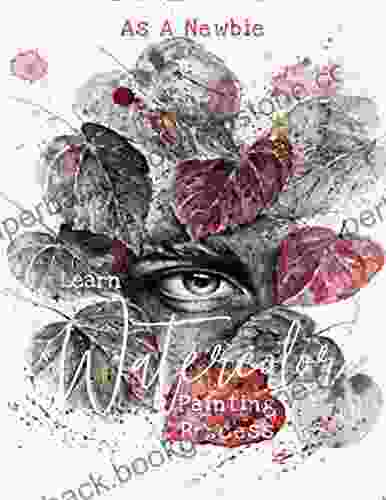Master the Art of Portrait Painting: A Comprehensive Guide to Depicting Ears and Hair

In the realm of portrait painting, capturing the nuances of ears and hair presents a unique set of challenges. These elements play a crucial role in defining the sitter's character and contributing to the overall expressiveness of the work. Mastering the techniques involved in rendering ears and hair will elevate your portraits to new heights of realism and emotional depth.
4.5 out of 5
| Language | : | English |
| File size | : | 7423 KB |
| Text-to-Speech | : | Enabled |
| Screen Reader | : | Supported |
| Enhanced typesetting | : | Enabled |
| Print length | : | 43 pages |
| Lending | : | Enabled |
Unveiling the Ear's Anatomy
Before embarking on the task of painting an ear, it is essential to understand its intricate anatomy. The ear consists of three main parts:
- The Outer Ear: This visible portion comprises the pinna, which funnels sound waves into the ear canal.
- The Middle Ear: A series of interconnected cavities that amplifies sound.
- The Inner Ear: The site of sound perception and balance.
For portrait painters, the outer ear is the primary focus. The pinna exhibits a complex structure, featuring ridges, folds, and depressions that vary from person to person. Understanding these nuances is paramount for creating a lifelike depiction.
Capturing the Subtleties of Ear Painting
To paint an ear convincingly, consider the following steps:
1. Observe the Ear's Shape and Structure
Begin by closely observing the subject's ear, paying attention to its overall shape, size, and position relative to the head. Note the curvature of the pinna and the placement of the earlobe.
2. Sketch the Ear's Outline
Using a light touch, sketch the outline of the ear and its major features. Focus on capturing the overall proportions and angles.
3. Define the Ear's Contours
Add depth and volume to the ear by defining its contours. Use soft, curved strokes to delineate the ridges and folds of the pinna. Pay attention to the areas where light and shadow interact, such as the creases and curves.
4. Add Shadows and Highlights
To create a three-dimensional effect, add shadows to the areas that receive less light and highlights to the illuminated areas. Use a variety of brush sizes and strokes to achieve subtle transitions of tone.
5. Refine Details and Textures
Complete the ear painting by adding fine details and textures. Use soft, feathery strokes to depict the skin's surface and any visible hair or blemishes.
Painting Hair: From Strands to Tresses
Hair is another essential element that can greatly enhance the expressiveness of a portrait. To effectively capture its beauty and movement, follow these guidelines:
1. Determine the Hair's Texture and Movement
Identify the type of hair your subject has, whether it is straight, curly, fine, or thick. Observe the direction of hair growth and how it falls naturally.
2. Sketch the Hair's Shape and Mass
Using light strokes, sketch the overall shape and mass of the hair. Indicate the general direction of the hair strands and any major partings.
3. Paint the Base Color and Highlights
Start by establishing the hair's base color using thin, transparent layers of paint. Gradually add highlights to create depth and dimension. Use lighter shades to depict areas where the hair catches the light.
4. Render Individual Hair Strands
To create the illusion of individual hair strands, use fine, controlled strokes. Pay attention to the direction and thickness of each strand, varying the pressure and angle of your brush.
5. Capture the Hair's Texture
Add texture to the hair by using different brush techniques. For example, use short, choppy strokes for curly hair or long, flowing strokes for straight hair. Experiment with various brush sizes to create a sense of depth and movement.
Mastering the art of painting ears and hair is a delicate and rewarding endeavor. By understanding the anatomy of the ear and the nuances of hair texture, you can create portraits that resonate with lifelike accuracy and emotional depth. Remember that practice is key, so don't hesitate to experiment with different techniques and approaches. With dedication and perseverance, you will unlock the secrets of capturing these intricate features and elevate your portrait painting skills to new heights.
4.5 out of 5
| Language | : | English |
| File size | : | 7423 KB |
| Text-to-Speech | : | Enabled |
| Screen Reader | : | Supported |
| Enhanced typesetting | : | Enabled |
| Print length | : | 43 pages |
| Lending | : | Enabled |
Do you want to contribute by writing guest posts on this blog?
Please contact us and send us a resume of previous articles that you have written.
 Best Book
Best Book Page Flip
Page Flip Bookshelf
Bookshelf Literary loom
Literary loom Chapter
Chapter Bookish
Bookish PageTurner
PageTurner Bibliophile
Bibliophile Story
Story Inkwell
Inkwell Bookworm
Bookworm Labyrinth
Labyrinth Plot Twist
Plot Twist Prose
Prose Paperback
Paperback Storyteller
Storyteller Sanctuary
Sanctuary Fiction
Fiction Reading
Reading Chronicle
Chronicle Read
Read Patrick Symmes
Patrick Symmes Esmeralda Santiago
Esmeralda Santiago Ernst Rettelbusch
Ernst Rettelbusch Koloman Moser
Koloman Moser Mary Matsuda Gruenewald
Mary Matsuda Gruenewald John Scarne
John Scarne S L Rowland
S L Rowland Tiana Bighorse
Tiana Bighorse Charlie Jane Anders
Charlie Jane Anders Keith Houston
Keith Houston Suzette Riddick
Suzette Riddick Bob Herbert
Bob Herbert Michael Anderle
Michael Anderle Barbie Scott
Barbie Scott Sergio Toppi
Sergio Toppi Saul Tanpepper
Saul Tanpepper Noel Riley Fitch
Noel Riley Fitch Kathy Mckeon
Kathy Mckeon Lorraine De Meaux
Lorraine De Meaux Dave Hill
Dave Hill Barney Nelson
Barney Nelson Jonathan Strahan
Jonathan Strahan William Ellis
William Ellis Beverly J Armento
Beverly J Armento John G Breslin
John G Breslin Milind Mulick
Milind Mulick Basilius Besler
Basilius Besler Bev Sellars
Bev Sellars Ebony Diamonds
Ebony Diamonds Denis Dutton
Denis Dutton C Pierce Salguero
C Pierce Salguero Erica Davies
Erica Davies Beverly Jenkins
Beverly Jenkins Bobby Brown
Bobby Brown F Scott Fitzgerald
F Scott Fitzgerald Pam Flowers
Pam Flowers Bella Martin
Bella Martin Bac Hoai Tran
Bac Hoai Tran Michael Haag
Michael Haag Gavin Maxwell
Gavin Maxwell Zachary Leader
Zachary Leader Jennifer Sewing
Jennifer Sewing Brian Burke
Brian Burke Laura Furman
Laura Furman Deborah Forman
Deborah Forman Lucy Jane Bledsoe
Lucy Jane Bledsoe Maggie Ramsay
Maggie Ramsay Benjamin Lewin
Benjamin Lewin Tim Rayborn
Tim Rayborn Staci Swider
Staci Swider Laurent Bolard
Laurent Bolard John Muir
John Muir Ellen Tomaszewski
Ellen Tomaszewski Lena Corwin
Lena Corwin Carol Huber Cypher
Carol Huber Cypher Maggie Craft
Maggie Craft Betsy Whyte
Betsy Whyte Partha Mitter
Partha Mitter Charles A Perrone
Charles A Perrone Robert Muirhead
Robert Muirhead Diane Gensler
Diane Gensler Michael Shaara
Michael Shaara Tammy Ruggles
Tammy Ruggles Linda Lael Miller
Linda Lael Miller Kristen Dutkiewicz
Kristen Dutkiewicz Barbara Hambly
Barbara Hambly J C Sum
J C Sum Charlotte Fiell
Charlotte Fiell Hope Hart
Hope Hart Veda Austin
Veda Austin Debbie Rose Myers
Debbie Rose Myers Chris Nashawaty
Chris Nashawaty Dalili
Dalili David Byrne
David Byrne Theda Perdue
Theda Perdue Peter Ustinov
Peter Ustinov Wayne Moniz
Wayne Moniz Faye Kellerman
Faye Kellerman Nefertiti Austin
Nefertiti Austin Tom Wilson
Tom Wilson Doug Risner
Doug Risner Silvia Marina Arrom
Silvia Marina Arrom Ella Frances Sanders
Ella Frances Sanders Bette Howland
Bette Howland Elena Gorokhova
Elena Gorokhova Rebecca Sugar
Rebecca Sugar James Goddard
James Goddard Bernth Lindfors
Bernth Lindfors Jennie Smallenbroek
Jennie Smallenbroek Baoshu
Baoshu Charlise Lyles
Charlise Lyles Boris Mihailovic
Boris Mihailovic Bonny Pierce Lhotka
Bonny Pierce Lhotka Jeremy Dronfield
Jeremy Dronfield Bob Martin
Bob Martin Ea Hooper
Ea Hooper Gary Wasserman
Gary Wasserman Joan Williams
Joan Williams Ottessa Moshfegh
Ottessa Moshfegh Marvin Patchen
Marvin Patchen Becky Gilhespie
Becky Gilhespie Jon Contino
Jon Contino Lonely Planet
Lonely Planet Shoko Tendo
Shoko Tendo Matthew J Milliner
Matthew J Milliner Tiana Laveen
Tiana Laveen Larissa Pham
Larissa Pham Barbara Delinsky
Barbara Delinsky Nolan Clark
Nolan Clark Bill Plympton
Bill Plympton Mark Crilley
Mark Crilley Basil Johnston
Basil Johnston Nelson Demille
Nelson Demille Orestes Lorenzo
Orestes Lorenzo Sara Boccaccini Meadows
Sara Boccaccini Meadows Dean Koontz
Dean Koontz Glynn Stewart
Glynn Stewart Susan Herrmann Loomis
Susan Herrmann Loomis Lucy Adlington
Lucy Adlington Bil Donovan
Bil Donovan John Ruskin
John Ruskin Barbara Casey
Barbara Casey Stuart Williams
Stuart Williams Benjamin Hochman
Benjamin Hochman Jodi Staniunas Hopper
Jodi Staniunas Hopper Iris Murdoch
Iris Murdoch Jason Sperb
Jason Sperb Hildegarde Mahoney
Hildegarde Mahoney Eric Rauchway
Eric Rauchway Stuart D Paine
Stuart D Paine Tori Rodriguez
Tori Rodriguez Justin Woolley
Justin Woolley Richard L Leza Sr
Richard L Leza Sr Ceidrik Heward
Ceidrik Heward Paula Kamen
Paula Kamen Melissa Rivers
Melissa Rivers Matthew Morgante
Matthew Morgante Bandana Ojha
Bandana Ojha Ashley Jaquavis
Ashley Jaquavis Bill Cotter
Bill Cotter Rainer Maria Rilke
Rainer Maria Rilke Sheila Montilla
Sheila Montilla Ian Nathan
Ian Nathan Philip Guston
Philip Guston J Dominique
J Dominique Nathalie Kalbach
Nathalie Kalbach Samuel Peralta
Samuel Peralta Seymour Morris Jr
Seymour Morris Jr Maura Spiegel
Maura Spiegel Nick Petrie
Nick Petrie Richard Sorger
Richard Sorger Stephen Boss
Stephen Boss Conn Iggulden
Conn Iggulden Robert Lanz
Robert Lanz Barbara Raue
Barbara Raue Gabrielle Euvino
Gabrielle Euvino Wesley Jones
Wesley Jones Lucee Joie
Lucee Joie Barack Obama
Barack Obama Betsy Prioleau
Betsy Prioleau Carol Sulcoski
Carol Sulcoski Lynne Olson
Lynne Olson John Seed
John Seed Helmut Kopka
Helmut Kopka Chad Zunker
Chad Zunker Helen Hoang
Helen Hoang Terry Compton
Terry Compton Bob Normand
Bob Normand Billie Holiday
Billie Holiday Benjamin John Coleman
Benjamin John Coleman Saxon Andrew
Saxon Andrew Josephine B Pasquarello
Josephine B Pasquarello Bob Leszczak
Bob Leszczak Hillary Jordan
Hillary Jordan Mary Brave Bird
Mary Brave Bird Claude Lanzmann
Claude Lanzmann Mariana Atencio
Mariana Atencio Bob Drury
Bob Drury Phillip Maisel
Phillip Maisel John H Vanderpoel
John H Vanderpoel Beebe Bahrami
Beebe Bahrami Tom Sito
Tom Sito Barbara Chase Riboud
Barbara Chase Riboud Bob Dow
Bob Dow Michael J Hayde
Michael J Hayde Joseph M Henninger
Joseph M Henninger Eva Tulene Watt
Eva Tulene Watt C J Boyle
C J Boyle Theo Farrington
Theo Farrington Nikki Turner
Nikki Turner Stephen Haff
Stephen Haff Kerry Bogert
Kerry Bogert Wendy Tait
Wendy Tait Robert Morkot
Robert Morkot Ben J Harris
Ben J Harris Joseph Heywood
Joseph Heywood Leanne Kitchen
Leanne Kitchen Daniel Rachel
Daniel Rachel Rosemary Kimani
Rosemary Kimani Tim Stokes
Tim Stokes Yahrah St John
Yahrah St John Matthew Luzi
Matthew Luzi Behrouz Boochani
Behrouz Boochani Dana Fox
Dana Fox Russell Foureagles
Russell Foureagles Monica Walters
Monica Walters Beatrice Sonders
Beatrice Sonders Lexi Sundell
Lexi Sundell Kevin Hart
Kevin Hart Mackenzie Phillips
Mackenzie Phillips Michael Wise
Michael Wise Chevonne Clarke Bryan
Chevonne Clarke Bryan Shane Mitchell
Shane Mitchell Sarah Birnbach
Sarah Birnbach Brad Lee
Brad Lee Ravyn Wilde
Ravyn Wilde Zongyan Hu
Zongyan Hu Hakeem M Oluseyi
Hakeem M Oluseyi James Ulyatt
James Ulyatt Roman Mars
Roman Mars Lisa Congdon
Lisa Congdon Betsy Dillard Stroud
Betsy Dillard Stroud Sarah Hepola
Sarah Hepola Bayard Taylor
Bayard Taylor Stewart M Green
Stewart M Green Bernice Lerner
Bernice Lerner Bob Dennard
Bob Dennard Marty Noble
Marty Noble Dave Hickey
Dave Hickey Mark Tufo
Mark Tufo Ben Coes
Ben Coes Katja Petrowskaja
Katja Petrowskaja Laney Salisbury
Laney Salisbury Betsy Beier
Betsy Beier Benjamin Drake
Benjamin Drake Jan V White
Jan V White Jules Verne
Jules Verne Matthew Brehm
Matthew Brehm Yvonne Blackwood
Yvonne Blackwood Ian Mcdonald
Ian Mcdonald Dean A Kowalski
Dean A Kowalski Merl Code
Merl Code Robin Cormack
Robin Cormack Paul S Leland
Paul S Leland James Haddock
James Haddock William Alexander
William Alexander Bet Borgeson
Bet Borgeson Rexford Govorchin
Rexford Govorchin Gerri Leen
Gerri Leen Leon Smith
Leon Smith Khadijah J
Khadijah J Eddie Chambers
Eddie Chambers James Joyce
James Joyce Marie Killilea
Marie Killilea Valerie L Winslow
Valerie L Winslow Colin Falconer
Colin Falconer Jay Armstrong
Jay Armstrong Thomas P Stafford
Thomas P Stafford Tim W Jackson
Tim W Jackson Steve Ryfle
Steve Ryfle Gabrielle Hamilton
Gabrielle Hamilton Joanne Hutchinson
Joanne Hutchinson Ben Box
Ben Box David Airey
David Airey Barbara Lewis
Barbara Lewis Barbara Miller
Barbara Miller Momoyo Nishimura
Momoyo Nishimura Philip Ball
Philip Ball Collins Dictionaries
Collins Dictionaries Bianca Del Rio
Bianca Del Rio Jane Pek
Jane Pek Bethany C Morrow
Bethany C Morrow Bob Elliott
Bob Elliott Florencia E Mallon
Florencia E Mallon Bonny Snowdon
Bonny Snowdon Barry Lord
Barry Lord Wilkie Collins
Wilkie Collins Barry Herniman
Barry Herniman J P Telotte
J P Telotte Talia Hibbert
Talia Hibbert Thomas S Hischak
Thomas S Hischak Peter Inglis
Peter Inglis Briana Wiles
Briana Wiles Sandra Duran Wilson
Sandra Duran Wilson Bengie Molina
Bengie Molina Jpinsiders
Jpinsiders Stanislaw Lem
Stanislaw Lem Sejal Shah
Sejal Shah Christopher Butler
Christopher Butler Fiona Peart
Fiona Peart Eric Henze
Eric Henze Margaret Kessler
Margaret Kessler Terese Marie Mailhot
Terese Marie Mailhot Benjamin E Wise
Benjamin E Wise Michael Doyle
Michael Doyle Keith Doyle
Keith Doyle D L Harrison
D L Harrison Louis Wain
Louis Wain Tove Ditlevsen
Tove Ditlevsen Ros Per
Ros Per Edward Gibbon
Edward Gibbon Barbara Totaro
Barbara Totaro Micah Ian Wright
Micah Ian Wright Steve Berry
Steve Berry Lesley Downer
Lesley Downer Sophie Cunningham
Sophie Cunningham Tim Powers
Tim Powers Individual Way
Individual Way Lowell Angell
Lowell Angell Tershia Lambrechts
Tershia Lambrechts Alan O Brien
Alan O Brien Ben Street
Ben Street Jordan Marie
Jordan Marie Tracey Lange
Tracey Lange Matt Smith
Matt Smith Dori Jones Yang
Dori Jones Yang Steve Huston
Steve Huston Jamie Carter
Jamie Carter Bill Bensley
Bill Bensley Ben Strand
Ben Strand Becky Stephen
Becky Stephen Bill Bryson
Bill Bryson Becky Chambers
Becky Chambers Ian J Malone
Ian J Malone Bill H Myers
Bill H Myers Norman Lee
Norman Lee Robert E Hampson
Robert E Hampson Barbara A Parish
Barbara A Parish Ben Corbett
Ben Corbett Terry Lee Stone
Terry Lee Stone John Mulholland
John Mulholland Bernice L Mcfadden
Bernice L Mcfadden Paul Kendall
Paul Kendall Brent Eviston
Brent Eviston Jenny Mckay
Jenny Mckay Barrington Barber
Barrington Barber Robert Henderson
Robert Henderson Ben Hannam
Ben Hannam Lori Wilde
Lori Wilde Chris Roel
Chris Roel Patricia Sands
Patricia Sands David V Jervis
David V Jervis Shing Schih
Shing Schih Beau Riffenburgh
Beau Riffenburgh Taylor Jenkins Reid
Taylor Jenkins Reid Brad Taylor
Brad Taylor Catherine Ryan Hyde
Catherine Ryan Hyde Ibl Press
Ibl Press Deanne Stillman
Deanne Stillman Michael Winter
Michael Winter Tony Horwitz
Tony Horwitz Eliot Greenspan
Eliot Greenspan Kolbie Blume
Kolbie Blume Jonathan C Slaght
Jonathan C Slaght David Fisher
David Fisher Ben Shahn
Ben Shahn Ken Browar
Ken Browar Kyle Froman
Kyle Froman Mary Peters
Mary Peters Blake Farha
Blake Farha Grace Berry
Grace Berry Bill Winner
Bill Winner Ruth Silvestre
Ruth Silvestre Dennis E Taylor
Dennis E Taylor Terry Pratchett
Terry Pratchett John Howard Griffin
John Howard Griffin Mary Lou Andre
Mary Lou Andre Michael Mammay
Michael Mammay Brandon Varnell
Brandon Varnell Laurie Gough
Laurie Gough Diane Duane
Diane Duane Blakely Little
Blakely Little Billie Rae Bates
Billie Rae Bates Elaine A Clark
Elaine A Clark Bich Minh Nguyen
Bich Minh Nguyen Malala Yousafzai
Malala Yousafzai Elisabeth Elliot
Elisabeth Elliot Elisabeth Stevens
Elisabeth Stevens Bart King
Bart King Jonathan Waterman
Jonathan Waterman Bill Arnott
Bill Arnott Barry Kirwan
Barry Kirwan Jessica Marting
Jessica Marting Hayao Miyazaki
Hayao Miyazaki Bolu Babalola
Bolu Babalola Interweave Editors
Interweave Editors Yoshitaka Amano
Yoshitaka Amano Bassey Ikpi
Bassey Ikpi Spencer Shaw
Spencer Shaw George Lopez
George Lopez Tyler Perry
Tyler Perry Joan Reardon
Joan Reardon Betty Dooley Awbrey
Betty Dooley Awbrey Shirtaloon
Shirtaloon George Schindler
George Schindler Ruby Dixon
Ruby Dixon Lucinda Fleeson
Lucinda Fleeson Kao Kalia Yang
Kao Kalia Yang William A Kappele
William A Kappele David E Lowe
David E Lowe Beth Tondreau
Beth Tondreau Marina Warner
Marina Warner William Black
William Black Kenya Hunt
Kenya Hunt Rita Benn
Rita Benn Stephen C Baldwin
Stephen C Baldwin Jonathan Lopez
Jonathan Lopez Barry Sonnenfeld
Barry Sonnenfeld Joseph Doddridge
Joseph Doddridge Joseph Lanza
Joseph Lanza Greg O Brien
Greg O Brien Wassily Kandinsky
Wassily Kandinsky Gillian Gloyer
Gillian Gloyer Bella Young
Bella Young Bebe Harper
Bebe Harper David Elliot Cohen
David Elliot Cohen Barbara Bradley
Barbara Bradley Ian Chilvers
Ian Chilvers Emily Spivack
Emily Spivack Tim Rangnow
Tim Rangnow Jessie Knadler
Jessie Knadler Donald N Thompson
Donald N Thompson Maurice Samuels
Maurice Samuels Robert Crais
Robert Crais Nancy Kress
Nancy Kress Mike Curato
Mike Curato Sophia Rolle
Sophia Rolle Laura Ling
Laura Ling Zora O Neill
Zora O Neill Birgit O Connor
Birgit O Connor Edward White
Edward White Umm Zakiyyah
Umm Zakiyyah Bill Lee
Bill Lee Vanessa Zoltan
Vanessa Zoltan Phoebe Robinson
Phoebe Robinson Jamie Davis
Jamie Davis Dan Dietz
Dan Dietz Elissa Washuta
Elissa Washuta Philip B Meggs
Philip B Meggs Eric Gibson
Eric Gibson Jacinda Townsend
Jacinda Townsend Mateo Askaripour
Mateo Askaripour Barbara Grizzuti Harrison
Barbara Grizzuti Harrison Benj Pasek
Benj Pasek Dan Moren
Dan Moren Robert Roskind
Robert Roskind Charles Sturt
Charles Sturt Betty Halbreich
Betty Halbreich Douglas Brooke Wheelton Sladen
Douglas Brooke Wheelton Sladen Barbara Davis
Barbara Davis Bella Blair
Bella Blair Katie Dowe
Katie Dowe Wayne Larsen
Wayne Larsen Stephen Mills
Stephen Mills Loring M Danforth
Loring M Danforth Ruth Superhal
Ruth Superhal Yiyun Li
Yiyun Li George H Gisser
George H Gisser Leo Buijs
Leo Buijs D A Miller
D A Miller William Lidwell
William Lidwell Fania E Davis
Fania E Davis Greg Mitchell
Greg Mitchell Toni Ann Johnson
Toni Ann Johnson Paraluman S Aspillera
Paraluman S Aspillera Simon Turney
Simon Turney Lynne Anne Blom
Lynne Anne Blom B V Larson
B V Larson Baby Professor
Baby Professor Clifford D Simak
Clifford D Simak James Grady
James Grady Bley Hack
Bley Hack Blaise Corvin
Blaise Corvin Harmon Cooper
Harmon Cooper Tom Wiener
Tom Wiener Harvey Arden
Harvey Arden Mario Rizzi
Mario Rizzi Deirdre Slattery
Deirdre Slattery Bonnie Barker
Bonnie Barker Tya Marie
Tya Marie Cornelius C Kubler
Cornelius C Kubler Jack Finney
Jack Finney Barbara Demick
Barbara Demick Sir Richard Francis Burton
Sir Richard Francis Burton Jane L Rosen
Jane L Rosen Hal Erickson
Hal Erickson Tony Burton
Tony Burton Linda Nochlin
Linda Nochlin Brad Bussie
Brad Bussie Jennifer Wilson
Jennifer Wilson Ben D Over
Ben D Over Michael Chatfield
Michael Chatfield Bj Wane
Bj Wane Helen Thorpe
Helen Thorpe Olive Yong
Olive Yong James S A Corey
James S A Corey Shanora Williams
Shanora Williams Beryl Markham
Beryl Markham Bruce Hanington
Bruce Hanington Kayla Arora
Kayla Arora Sarah Mirk
Sarah Mirk Mitche Graf
Mitche Graf Diane Tuckman
Diane Tuckman Ben Eastham
Ben Eastham Darrel Rees
Darrel Rees Blair Howard
Blair Howard Ulysses S Grant
Ulysses S Grant Ilan Stavans
Ilan Stavans John E Siers
John E Siers Jenna Fischer
Jenna Fischer Marie Beardmore
Marie Beardmore Tessa Miller
Tessa Miller Steven Campbell
Steven Campbell Stephanie Claytor
Stephanie Claytor Barry Moser
Barry Moser Maxime J Durand
Maxime J Durand Poppy Evans
Poppy Evans Noret Flood
Noret Flood Lauren Meisner
Lauren Meisner Rohan M Vider
Rohan M Vider
Light bulbAdvertise smarter! Our strategic ad space ensures maximum exposure. Reserve your spot today!

 Terry BellDemanding Justice: Post-Civil War Western Justice and Its Impact on American...
Terry BellDemanding Justice: Post-Civil War Western Justice and Its Impact on American... Christian BarnesFollow ·11.1k
Christian BarnesFollow ·11.1k Douglas AdamsFollow ·3.5k
Douglas AdamsFollow ·3.5k Glenn HayesFollow ·4.9k
Glenn HayesFollow ·4.9k Dean CoxFollow ·16.7k
Dean CoxFollow ·16.7k Dallas TurnerFollow ·14.6k
Dallas TurnerFollow ·14.6k Carlos DrummondFollow ·4.9k
Carlos DrummondFollow ·4.9k Craig CarterFollow ·17.1k
Craig CarterFollow ·17.1k Ernest J. GainesFollow ·16.7k
Ernest J. GainesFollow ·16.7k

 Bryan Gray
Bryan GrayThe Second Generation: Voices of the Holocaust
The Holocaust was one of the most horrific...

 Douglas Foster
Douglas FosterWalking the Fields of the Newfoundland Dead
In the heart of the rolling countryside of...

 Henry James
Henry JamesThe Unsanctioned Asset: A Gripping Thriller Set in a...
In the realm of espionage thrillers, The...
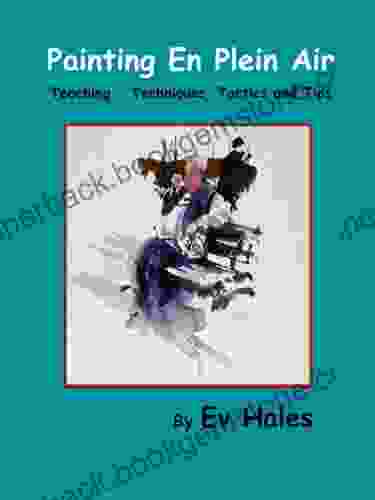
 Devon Mitchell
Devon MitchellPainting En Plein Air: Capturing the Essence of Nature on...
Painting en plein air, or painting...
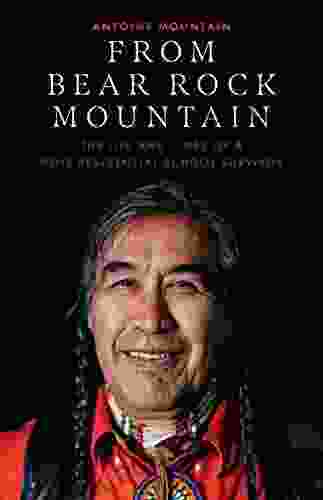
 Damon Hayes
Damon HayesThe Life and Times of Dene Residential School Survivor
Residential schools...

 Steve Carter
Steve CarterIndia Artists and the Avant Garde: 1922-1947
The term "avant-garde" is...
4.5 out of 5
| Language | : | English |
| File size | : | 7423 KB |
| Text-to-Speech | : | Enabled |
| Screen Reader | : | Supported |
| Enhanced typesetting | : | Enabled |
| Print length | : | 43 pages |
| Lending | : | Enabled |


